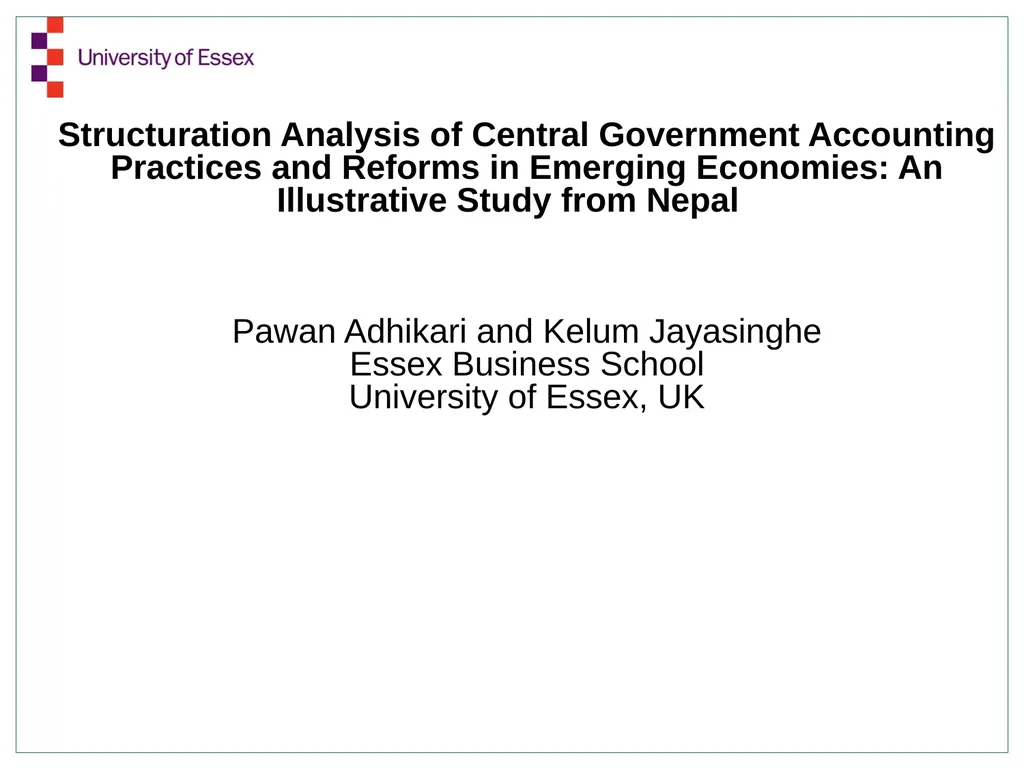
Structuration Analysis of Central Government
Author: tawny-fly | Published: 2025-05-28
Description: Structuration Analysis of Central Government Accounting Practices and Reforms in Emerging Economies: An Illustrative Study from Nepal Pawan Adhikari and Kelum Jayasinghe Essex Business School University of Essex, UK Aim Generate a nuanced
Download Presentation
Download the PPT/PDF: Download
Transcript:
Loading transcript…